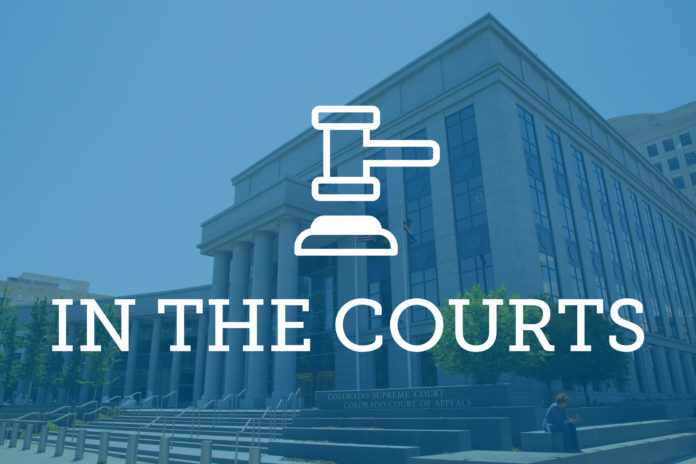

Editor’s Note: Law Week Colorado edits court opinion summaries for style and, when necessary, length.
Colorado State Board of Education v. Adams County School District 14 et al.
According to the opinion, this case and the Colorado Supreme Court case Weld County Colorado Board of County Commissioners v. Ryan, also issued Oct. 16, provided an opportunity for the state high court to re-examine the political subdivision doctrine in Colorado and its articulation in the Colorado Supreme Court case Martin v. District Court. According to a footnote, this opinion focuses on Colorado’s political subdivision doctrine and doesn’t address the federal version of the doctrine. Colorado case law refers to the doctrine described here in a variety of ways as the footnote cited numerous cases. The footnote added the terms “political subdivision doctrine” and “rule of Martin” are used interchangeably in the opinion.
The “rule of Martin,” which has been applied to state agencies, political subdivisions and officials acting in their official capacity, is a judicially created rule that precludes standing to challenge a government entity’s decision when: the state agency, political subdivision or official seeking review is subordinate to the government entity whose action is challenged; and no statutory or constitutional provision expressly authorizes the subordinate party to seek judicial review of the superior government entity’s action.
Here, the Colorado State Board of Education invoked this doctrine in successfully moving to dismiss claims brought by Adams County School District 14 challenging the State Board’s decision to remove its accreditation and order its reorganization. Adams 14 challenged the district court’s dismissal of its claims and the political subdivision doctrine itself. It contended the doctrine had become unmoored from its jurisprudential origins and resulted in the unfair denial of judicial relief to public entities that have been injured by state agencies and statutes.
The Colorado Supreme Court concluded the political subdivision doctrine and its articulation in the rule of Martin have generated unnecessary confusion and are ultimately duplicative of the two-part test for standing set forth in the case Wimberly v. Ettenberg.
The Colorado Supreme Court abandoned the doctrine and the rule of Martin and instead held Wimberly supplies the sole test for determining whether a party has standing in Colorado. In other words, subordinate state agencies, political subdivisions and officials raising claims challenging a government entity’s decision need not satisfy any additional specialized standing test, according to the opinion. Evaluating each of Adams 14’s claims under Wimberly, the high court further held that all were correctly dismissed for lack of standing.
The Colorado Supreme Court en banc unanimously affirmed the district court’s order.
Weld County Colorado Board of County Commissioners v. Ryan et al.
The Weld County Colorado Board of County Commissioners (Weld County) sought judicial review of rules adopted by the Colorado Air Quality Control Commission to minimize emissions of certain pollutants from oil and gas wells. The Colorado Court of Appeals applied a specialized political subdivision standing test and concluded Weld County didn’t have standing to pursue its claims under that test.
The Colorado Supreme Court granted certiorari review of this case and its companion case, Colorado State Board of Education v. Adams County School District, to review the viability of that political subdivision test. In State Board of Education, the state high court abandoned the political subdivision test because it has generated unnecessary confusion, according to the opinion.
Instead, the Colorado Supreme Court explained, a political subdivision, just like any other plaintiff, must satisfy only the standing test developed in Wimberly v. Ettenberg.
Applying that holding here, the Colorado Supreme Court examined whether Weld County has suffered (1) an injury in fact (2) to a legally protected interest. The state high court concluded, although Weld County has a legally protected interest, it can’t demonstrate an injury to that interest. The state high court explained accordingly, Weld County lacks standing to pursue the claims raised here.
The Colorado Supreme Court en banc unanimously affirmed the Colorado Court of Appeal’s judgment, albeit on different grounds.
To find out all the rulings from the Colorado Supreme Court Oct. 16, click here.

